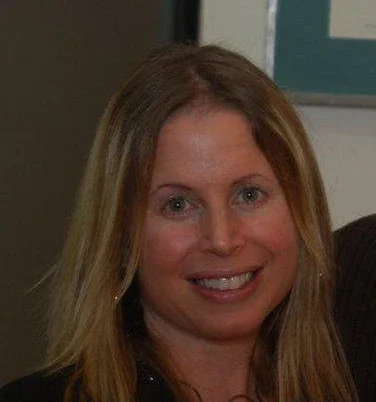For decades, parents have made peanut-butter-and-jelly sandwiches with the crust cut off for all their picky children. So, when Smucker's came out with their now famous "Uncrustables," 2-ounce peanut butter and jelly pockets that are enclosed without a crust, many parents looked at it as a much-needed time saver for lunch boxes everywhere. But this simple improvement on a longtime lunch staple raises an interesting question: Can you patent a new product that stems from an old favorite?
The U.S. Court of Appeals didn't think so, rejecting Smucker's effort to patent its process for making the pocket-size peanut butter and jelly pastries. Smucker's already has a general patent for the treat itself, which it purchased from Len Kretchman and David Geske, two men from North Dakota who developed the uncrustable sandwiches in 1995 for school children. But, the court rejected two additional patents that Smucker's was seeking to protect the actual process of making the Uncrustables. This was a result of Smucker's request that a Michigan food manufacturer stop producing ready-made peanut butter and jelly sandwiches for a school district.
Although Smucker's couldn't patent the process of making a peanut butter and jelly sandwich, others have found it a bit easier to patent some old favorites.
The childhood love of swinging
A few years back, Steven Olsen was issued a patent for "a new and improved method of swinging." His patent was specifically for the action of pulling one chain first, then the other. The 7-year-old Olsen, with the help of his father, Peter, a patent attorney with 3M Co., stated that his "invention" would enable children to "swing independently and joyously, which is of great benefit to all." Peter Olsen said he was merely trying to show his son what he did for a living, but what they got was U.S. Patent number 6,368,227 for a "new" way of swinging on a swing.
Dividing numbers by other numbers
When Signature Financial Group applied for a patent for "a system that channeled money from mutual funds into a central investment pool," many thought it would be impossible to patent a business method. Previous courts had always upheld that business methods were not something one could patent. But, the courts looked at Signature's system as, not only a method of doing business, but a mathematical process using algorithms. So, Signature got their patent on what was basically an accounting method—dividing numbers by other numbers - which the court maintained produced a useful, concrete and tangible result, which can be patented.
Shopping on the internet
The Internet and the World Wide Web have spawned numerous controversial patents, but none may be as controversial as Lawrence Lockwood's patent. The former San Diego travel agent believed that his patent for an "automatic business and financial transaction processing system" gave him significant control over shopping on the Internet. This patent, which he received in September 2001, took seven years and thousands of dollars in legal fees. The patent itself summarizes how a group of self-service terminals could be connected by telephone to a central processor at a financial institution, similar to the World Wide Web's e-commerce function. He has been in numerous lawsuits with website owners, and approximately 20 decided to purchase a lifetime license from Lockwood for as much as $5,000 each, to allow the companies to perform e-commerce via the Internet.
Spinning wheels
This patent-pending product has made millions by adding on to an existing creation. Chrome wheels have been in existence for years, so the inventor came up with a polished plate that rode on top of the bearing. The spinning plate creates the illusion that the tires continue to spin, even when the car comes to a complete stop. Selling at approximately $1,500 per rim, this simple but lucrative invention can be seen on vehicles across the country.
Going to the bathroom? First come, first serve
IBM Corp. received a now infamous patent for a "system and method for providing reservations for restroom use." Basically, it was a first-come, first-serve basis for going to the bathroom during travel. Originally filed in August 2000, IBM's restroom reservation patent describes a system that would determine who is next in line for using restroom facilities on an airplane, passenger train, or boat. The system would be run by a computer that would assign a number to customers based on a first-come, first-served basis. The system would give customers an estimated waiting time to use the restroom and would notify them when the restroom was available. It would also allow them to cancel their restroom reservation. Although the company later decided to renounce its patent, after a petition was issued and the patent office ordered a re-examination of the patent many wonder how a patent for waiting in line for the bathroom was issued in the first place.
So how difficult is it to patent a new idea anyway?
A patent for an invention is the grant of a property right to the inventor, issued by the United States Patent and Trademark Office (USPTO). Generally, the term of a new patent is 20 years from the date on which the application for the patent was filed. It usually takes about two-and-a-half years for a patent to be processed, with about 65 percent of all patents submitted being approved.
But for those of us who do not have the available funds or a patent attorney in the family, the USPTO also offers a fast and affordable way to temporarily protect your invention until you're ready to commit the time and money required to submit a full patent application. It's called a Provisional Application for Patent. A Provisional Application allows you 12 months to test out the commercial viability of your idea, make refinements, raise funds and even sell your invention, all while protected by a USPTO priority filing date. So what is a priority filing date exactly? Think of it as a legal place marker that allows you to go on record as the first person to officially lay claim to your idea. Just be sure to file your full patent application before the 12-month period expires because the USPTO does not offer Provisional Application extensions and you could lose your priority filing date to an inventor with a similar idea.

